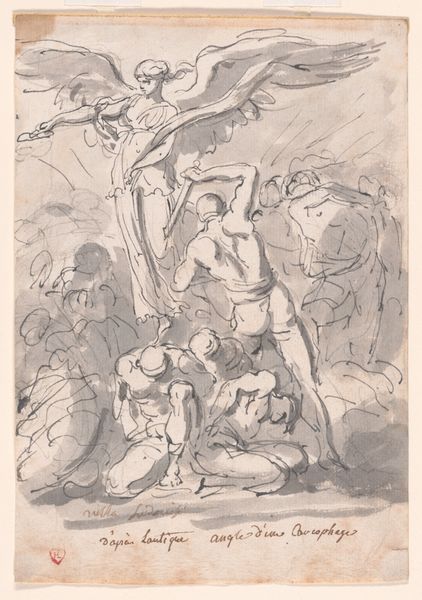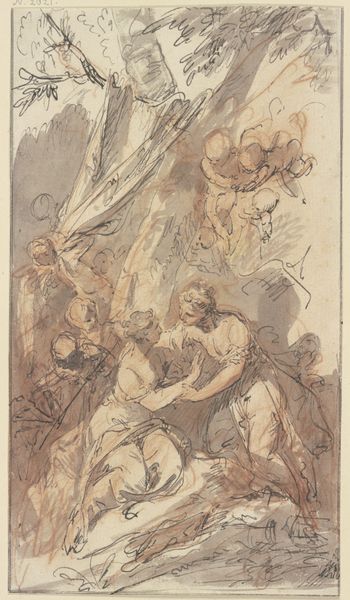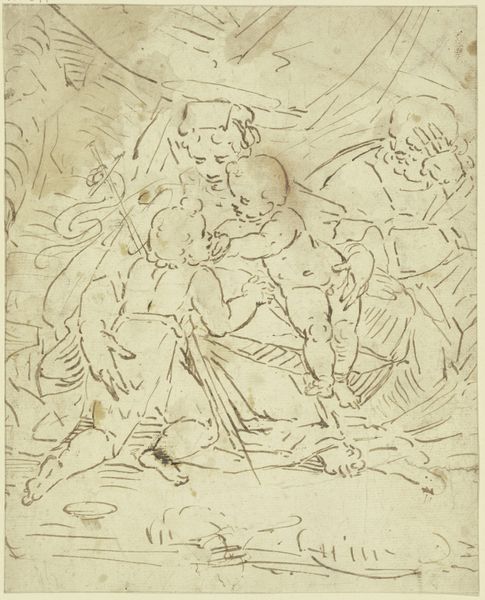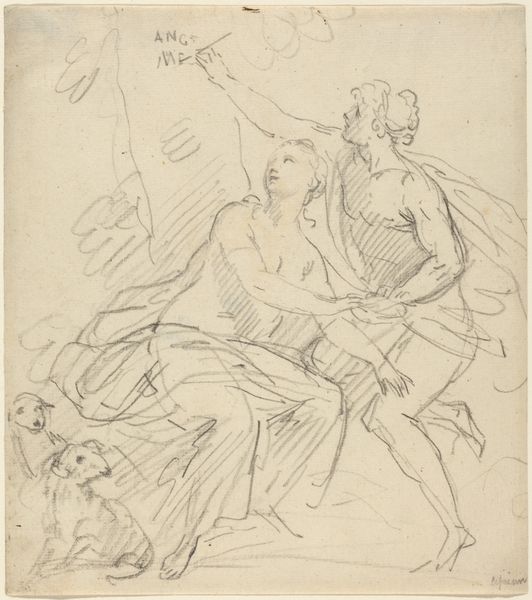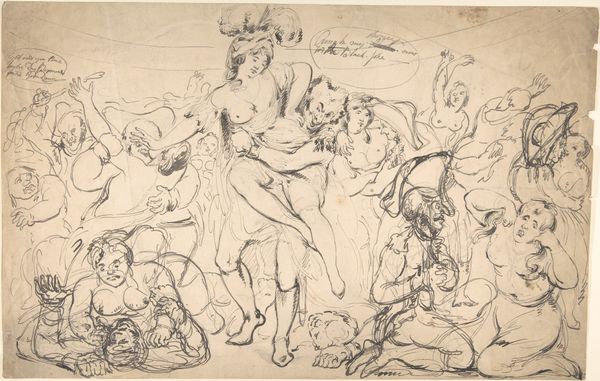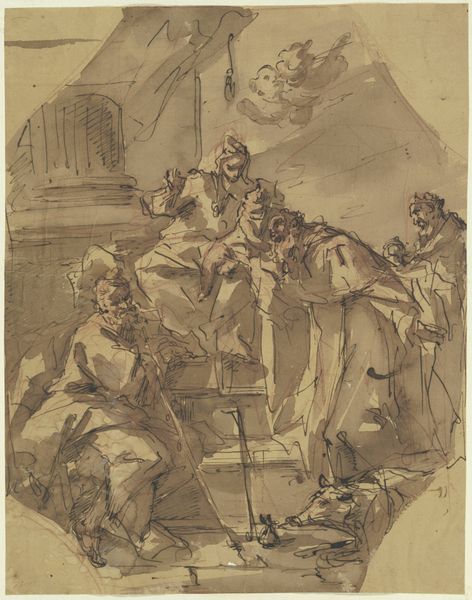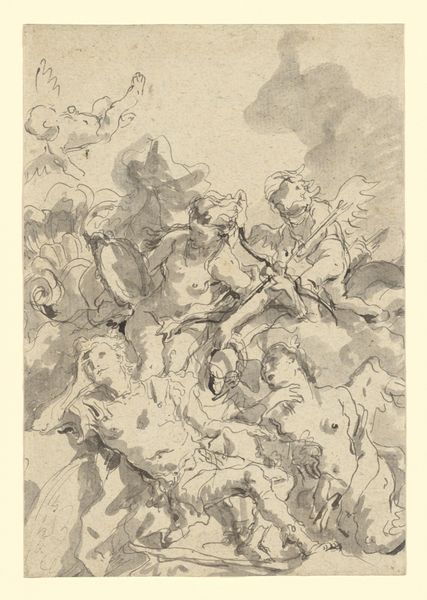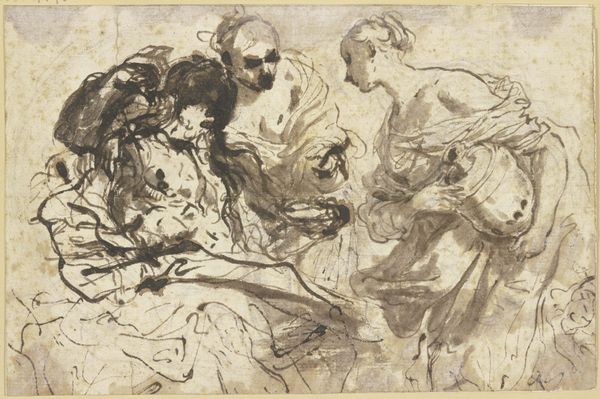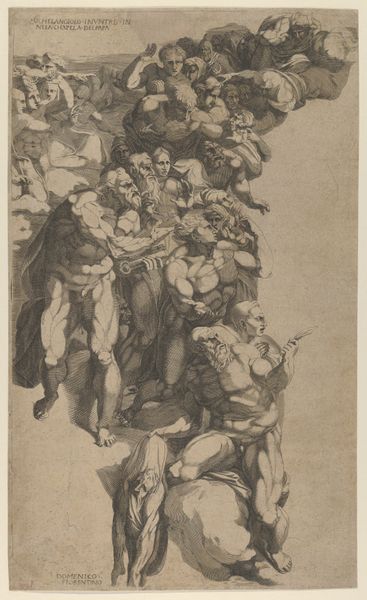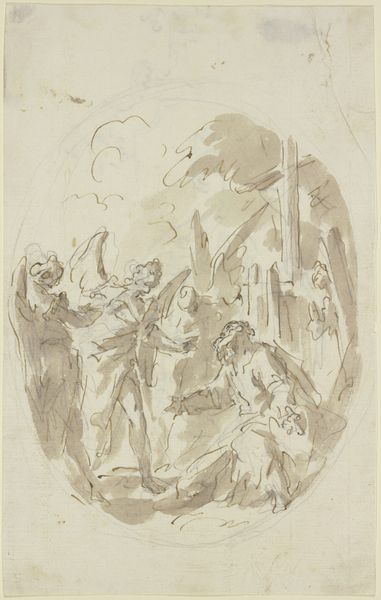
drawing, ink, chalk
#
portrait
#
drawing
#
allegory
#
baroque
#
ink
#
chalk
#
15_18th-century
Copyright: Public Domain
Curator: Welcome. Before us, we have a drawing entitled "Zwei Allegorien (Immortalità und Concordia) und zwei Köpfe," or "Two Allegories (Immortality and Concord) and Two Heads," attributed to Gaspare Diziani. It currently resides in the Städel Museum. Editor: My first thought is how preliminary it feels. There's a looseness to the chalk and ink work, almost as though we are seeing the artist's mind at work. I notice the different tonal qualities achieved through varied pressure and layering—almost a roadmap of creative decisions made visible through his process. Curator: Exactly. Diziani, working in the 18th century, engaged heavily with allegorical themes. Concord and immortality, two desirable qualities often seen in art commissioned by civic institutions striving for stability. We are offered an ideal of society working towards betterment. Editor: How much of that societal drive depended on materials being readily and affordably available? Ink, chalk, and paper enabled Diziani's speed and agility. These materials allowed him to capture fleeting ideas before committing to more expensive, large-scale commissions. Curator: A good point. The ease of dissemination undoubtedly democratized art to a degree. What I also find interesting is how these drawings often served as models for larger paintings or frescos, influencing artistic production across regions. Did this affect workshop practices at the time? Editor: Absolutely! Drawings such as these are like instruction manuals for workshop apprentices. They break down complex forms into manageable components. There’s an element of craft education at play. Look how he suggests textures with hatching, how figures seem to emerge from raw materials. Curator: These works allow us to examine Baroque ideologies in how they pervaded everyday cultural output and, in turn, reflected back onto the institutions that sponsored artistic efforts in Venice and beyond. Editor: For me, though, the focus isn’t merely about the reflection of power. It’s equally about understanding art’s roots in the ground of daily practice, of learning, and making with whatever one had at hand. Curator: Both avenues of interpretation enhance our understanding of works such as Diziani's drawing. We can grasp his era a little better with it. Editor: Agreed. Thinking about his methods also brings me a different kind of closeness, somehow.
Comments
No comments
Be the first to comment and join the conversation on the ultimate creative platform.
